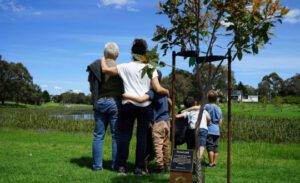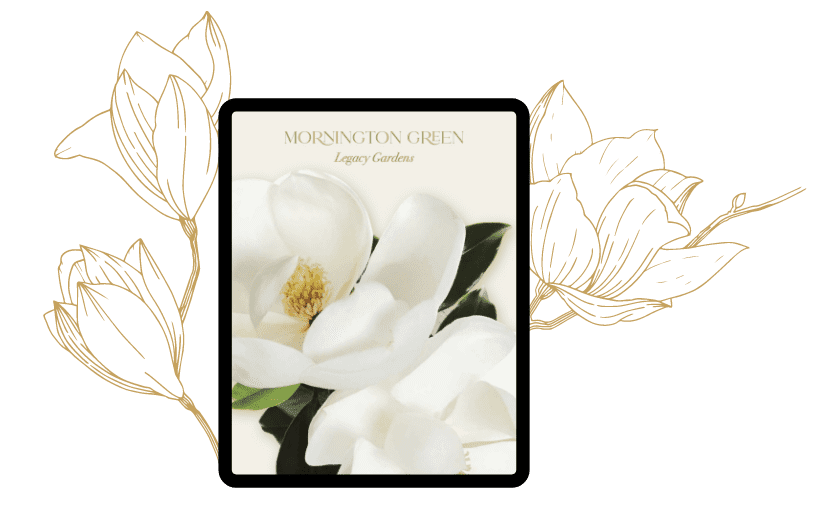Types Of Memorial Trees To Plant In Australia
Infuse the ashes of your loved ones including your pets into these Living Legacy Tree options in a protected garden
With a Living Legacy Memorial Tree, your ashes are carefully treated and infused into a tree of your choice to live on for generations to come. Trees can be shared amongst family over generations creating a beautiful place of remembrance for your family and pets as well.
Choose Your Living Legacy Tree
- All
- winter
- autumn
- summer
- spring

JACARANDA

RED/ YELLOW FLOWERING GUM

CREPE MYRTLE

GINKGO

FLAME TREE
Choose Your Living Legacy Tree
- All
- winter
- autumn
- summer
- spring

JACARANDA

RED/ YELLOW FLOWERING GUM

CREPE MYRTLE

GINKGO

FLAME TREE

LIQUID AMBER

TRIDENT MAPLE

GOLDEN WATTLE

WHITE MAGNOLIA

QUEENSLAND KAURI

ENGLISH OAK

CHERRY BLOSSOM

FLOWERING APPLE

REDBUD

TULIP MAGNOLIA
The Process Of Living Legacy Memorial Tree

Schedule a call
We'll get to know you and your needs, helping us to help you by creating a profoundly beautiful legacy.

Tour the gardens
Book a tour of our beautiful botanical gardens situated in the serene Mornington Peninsula.

Choose your tree and location
Secure a tree that connects to you and your family. Then watch it grow, together.
DOWNLOAD YOUR FREE BROCHURE
Everything You Need to Know about Legacy Trees
Download our PDF Brochure and discover the perfect tree, what’s included, how to create a legacy, soil science and more.







